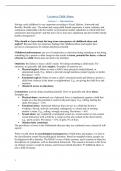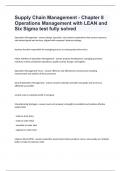Class notes
Psychological and Neurobiological Consequences of Child Abuse - Extensive summary of all lectures (english)
- Course
- Institution
Psychological and Neurobiological Consequences of Child Abuse - Extensive summary of all lectures (english)
[Show more]












